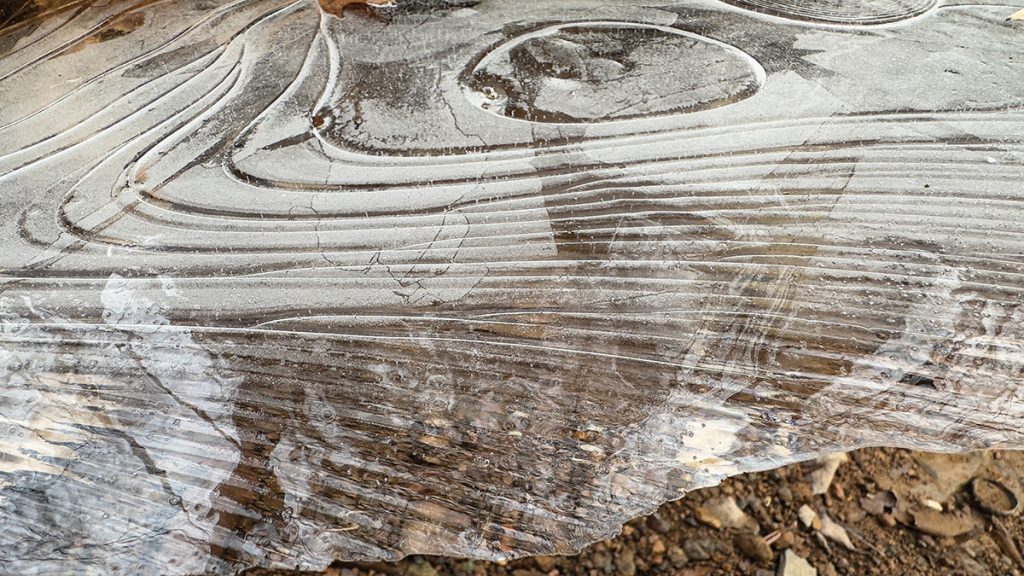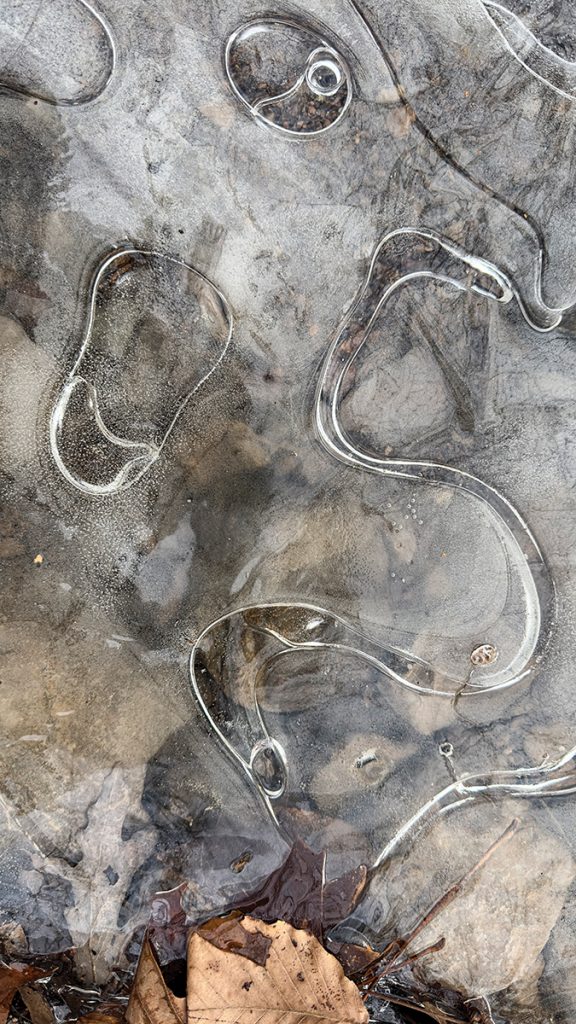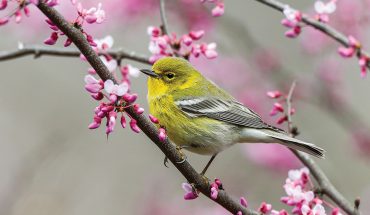The unique properties of water make it life-sustaining in the coldest months. And, if you look closely, it creates beautiful patterns.
by Mike Dunn
January is generally a quiet time in our woods. The buzzing of insects ceases with the first cold spell and the birds seem to save their voices for the breeding season ahead. When a cold wind blows, there are few leaves to rustle. And it seems most of the people I know spend more time inside.
But I find the cold weather inviting and invigorating. The winter woods have a different beauty to them. The muted colors help me focus on the details of my surroundings — the shapes of trees, a track in the mud, the textures of a seed.
Winter is also the time when our wet-weather stream tends to flow a bit more due to increased rainfall and the now-dormant trees lining its route being less thirsty.
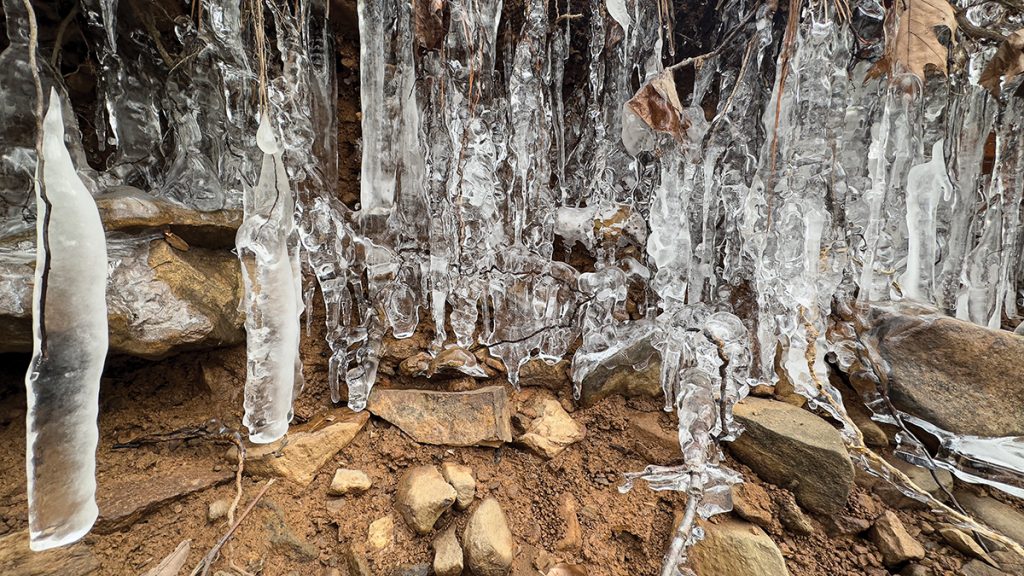
Even a trickle of water flowing in our little creek changes the landscape. Flowing water creates a soundscape as it caresses the rocks and exposed tree roots. Living things, both plant and animal, are drawn to water for its life-sustaining qualities.
In a 1957 essay, “The Flow of the River,” American anthropologist and author Loren Eiseley once wrote, “If there is magic on this planet, it is contained in water.”
One of the most magical aspects is what happens when water is transformed and sculpted by the hand of Old Man Winter into ice.
A unique quality of water is that its solid form, ice, is less dense than the liquid form. That is not the case with most liquids, whose solid form is more dense.
This is why ice floats on water. You may consider that important for your summertime tea or cocktails, but, in fact, this allows life as we know it to exist in our lakes and streams in cold-weather environments.
Since lakes and rivers freeze from top to bottom, it allows fish and other aquatic organisms to survive even when the surface of a lake has frozen over. If ice sank, the open water would be pushed to the top where it too would freeze, eventually causing the water bodies to fill with ice and freeze solid, killing all the life within them.
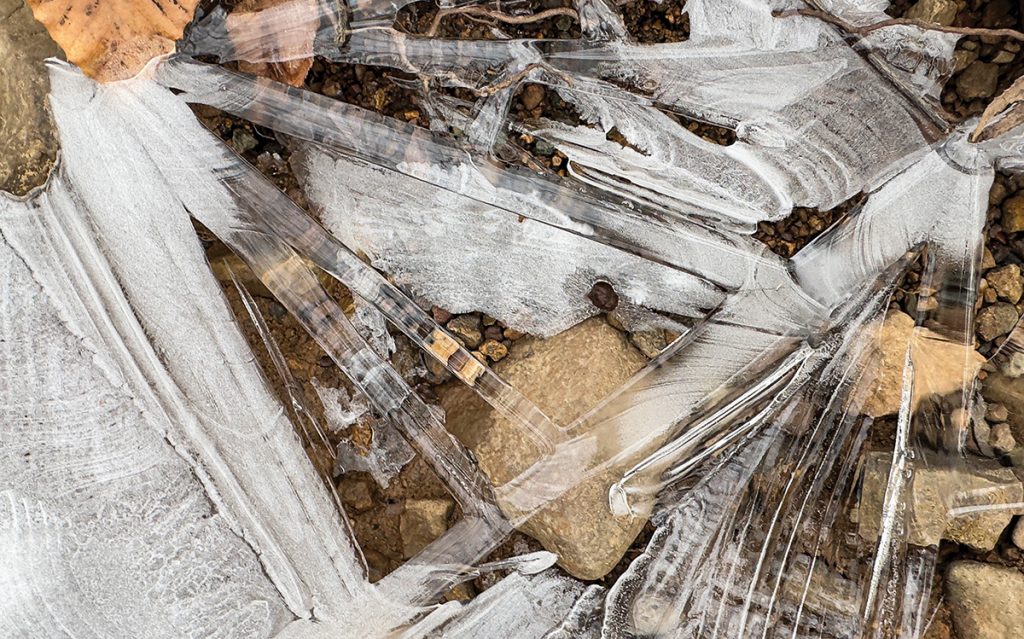
Ice not only sustains life, but also adds beauty to our world. When it gets really cold, our little creek is transformed into a natural art gallery of intricate patterns and forms.
Last winter, we had a heavy rain that created a surge of water in the creek bed. Temperatures plummeted over the next few days as the water levels receded. The result was an array of suspended panes of ice decorated with swirls and geometric shapes.
I spent a couple of hours observing the artwork, using my phone’s camera to take the accompanying photos. I occasionally held the camera below a suspended sheet of ice and photographed upwards through the frozen lens to see its interpretation of the world above.
These collaborative artists, cold and water, work together to create a variety of pieces — some bold, some delicate, all ephemeral. In Blind Willow, Sleeping Woman, Japanese writer Haruki Murakami wrote: “Ice contains no future, just the past, sealed away.”
So, in the next bout of frigid weather, bundle up and take a walk along a local stream or pond. Gaze upon winter’s art gallery and see if you can decipher the story in the ice before the show melts away.
This article originally appeared in the January 2024 issue of WALTER magazine.

